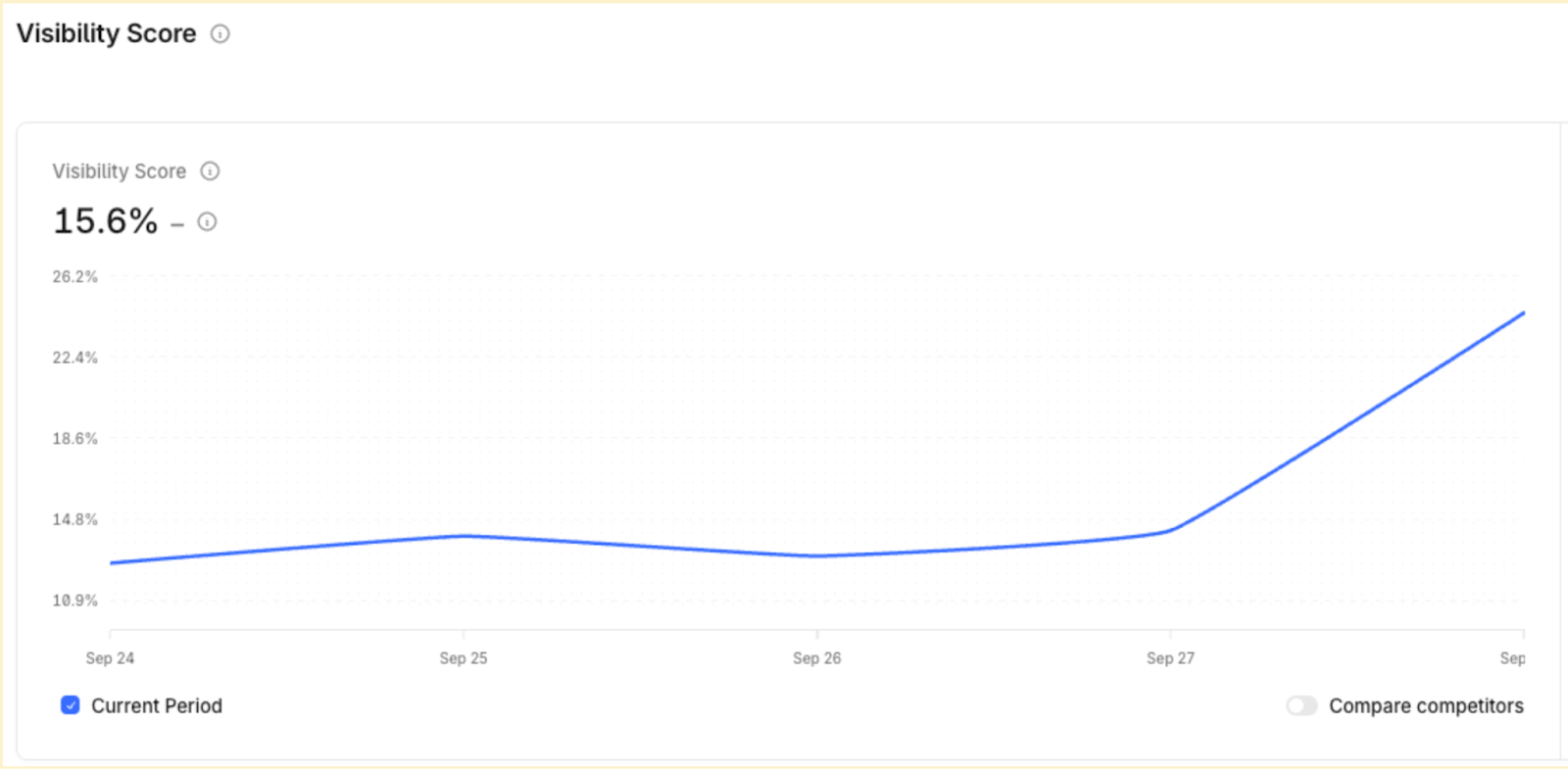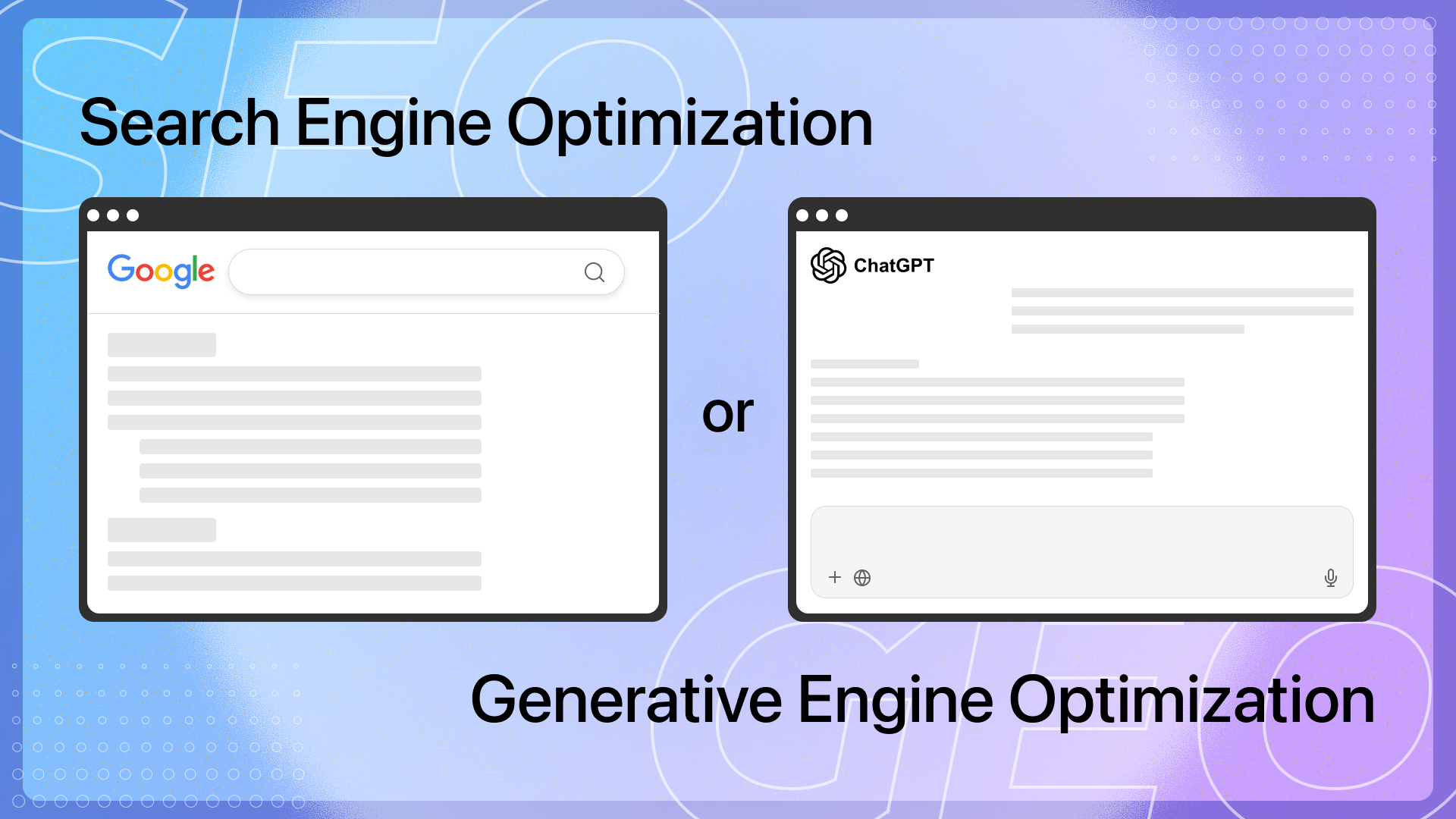The fundamental shift in how buyers discover solutions
Perplexity went from zero to 100 million weekly users faster than TikTok. ChatGPT reached 700 million weekly active users in under two years. Claude serves millions daily. Yet most B2B companies still allocate 100% of their search optimization budget to Google.
This misallocation reveals a strategic blindspot. According to Forrester Research, 90% of B2B buyers now use AI tools in their research process. A separate G2 study found that 29% start their research in ChatGPT more often than Google. The discovery landscape has fundamentally shifted, but our optimization strategies haven't evolved.
The evidence is mounting across every industry vertical. When researchers at BrightEdge analyzed recommendation patterns, they discovered that ChatGPT and Google's AI disagree on product recommendations 62% of the time. Two different algorithms, two different sets of winners. Companies ranking first on Google often don't appear at all in AI-generated recommendations.
This creates a strategic dilemma for founders. Do you continue investing in traditional SEO, where the playbook is proven but the audience is fragmenting? Or do you shift resources to Generative Engine Optimization (GEO), where the opportunity is massive but the rules are still being written?
Understanding the architectural difference
Traditional search and AI search operate on fundamentally different principles. Google built its empire on PageRank, an algorithm that treats links as votes. The more authoritative sites that link to you, the higher you rank. This created an entire industry around link building, keyword optimization, and technical SEO.
Language models work differently. They don't crawl websites in real-time or count backlinks. Instead, they synthesize patterns from their training data and generate responses based on semantic understanding (well, unless you turn on search tools). When someone asks ChatGPT for software recommendations, it's not checking current rankings or analyzing link profiles. It's pattern-matching based on how often and in what context different solutions appear in its training corpus. Of course, when web search tools are enabled, those fetched results act as additional data that gets synthesized into the overall context to form the final response.
This architectural difference has profound implications. A study by Digivate found that using citation-focused optimization strategies increased AI visibility by 115% in six weeks. These weren't traditional SEO tactics. They were strategies specifically designed for how language models process and weight information.
Consider how Cursor positioned itself in this new landscape. Instead of competing for keywords like "code editor" or "IDE," they focused on being consistently mentioned in developer discussions about AI-assisted coding. They showed up in GitHub discussions, Stack Overflow answers, and technical blog posts. Not as advertisements, but as genuine parts of the conversation. As a result, Cursor appears in nearly every ChatGPT response about AI coding tools, despite having a fraction of Visual Studio Code's traditional web presence.
The psychology gap between search behaviors
The difference between Google search and AI search isn't just technical. It's psychological. Google users think in keywords. They've been trained over two decades to reduce their needs to 2-4 word phrases. "CRM software." "Email marketing platform." "Project management tool."
AI search users have conversations. They describe their situation, explain their constraints, and ask for personalized recommendations. "I need a CRM that integrates with Slack, works for a 10-person sales team, and costs less than $500 per month." The query itself is richer, and so is the expectation for the response.
Sierra, the conversational AI platform, understood this shift early. Instead of optimizing for broad keywords, they created detailed, conversational content that mirrors how people actually describe customer service challenges. They published case studies that read like problem-solving narratives, not keyword-stuffed landing pages. When potential customers ask AI assistants about improving customer service automation, Sierra consistently appears in recommendations, not because they rank for "customer service software," but because their content matches the conversational patterns of real queries.
The compound effect of distributed presence
One of the most counterintuitive findings in GEO research is the importance of distributed presence. Unlike Google, which can index and understand that multiple URLs belong to the same domain, language models weight information differently based on where and how often it appears.
Anthropic's approach to market presence demonstrates this principle. Beyond their main website, they maintain active presences in:
- Technical discussions on Reddit and HackerNews
- Detailed documentation that gets cited in developer forums
- Research papers that establish technical authority
- Case studies published across partner websites
- Employee thought leadership on LinkedIn and Twitter
Each piece of content can stand alone, but together they create what researchers call "semantic saturation." When language models encounter consistent information about a product across multiple contexts and sources, they're more likely to include it in recommendations.
The numbers support this strategy. Search Engine Journal reports that Reddit citations in AI responses increased 450% in recent months. User-generated content now comprises 21.74% of all AI citations. This isn't random. Language models have learned to weight peer discussions and authentic user experiences as trust signals.
Freshness matters
Perhaps the most dramatic difference between traditional SEO and GEO is the importance of recency. While Google's algorithm considers hundreds of factors, with domain authority and backlinks providing lasting value, AI models heavily weight fresh content.
Content platforms have discovered through experimentation that recently updated content receives significantly more AI citations than older content, regardless of traditional SEO metrics. Research shows that content updated within the last 60 days receives multiple times more AI citations than older content. This has led to systematic refresh strategies where top-performing pages are updated every two weeks with new data, examples, or insights. The updates don't need to be major—adding recent statistics, updating timestamps, or including new use cases is sufficient to signal freshness.
This creates an operational challenge. Traditional SEO rewarded creating evergreen content that could rank for years. GEO rewards continuous iteration and updates. Companies that can't maintain this velocity lose visibility quickly.
For "how fresh is fresh?", check out our other post from the latest research paper on this topic: The search visibility gap: What 5,000 queries reveal about AI versus Google.
Building for language model comprehension
The technical implementation of GEO requires a different approach to content structure. While humans skim and scan, reading headlines and bullet points, language models process everything, including elements humans never see.
Successful GEO practitioners layer their content in three levels:
.png)
Level 1: Human-visible content
The traditional elements like headlines, body copy, and images. This remains important because humans still need to validate AI recommendations.
Level 2: Structured data
Schema markup, JSON-LD, and metadata that provides explicit signals about content meaning and relationships. Language models weight structured data heavily because it removes ambiguity.
Level 3: Contextual enrichment
Detailed HTML comments, comprehensive alt text, and hidden contextual paragraphs that provide additional context without cluttering the human experience. We improved a startup’s AI visibility by 30% within 1-2 weeks time frame simply by adding detailed HTML comments explaining their unique methodology.

This three-layer approach requires coordination between content, product, and engineering teams. It's not enough to write good content. That content needs to be structured in ways that maximize comprehension by both humans and machines.
The organizational challenge
The biggest barrier to effective GEO isn't technical or strategic. It's organizational. Traditional SEO could be owned by a single team or outsourced to an agency. GEO requires orchestration across departments.
Customer success needs to encourage detailed reviews on G2 and Capterra, because AI models frequently cite review platforms. Product teams need to publish transparent documentation and pricing, because models penalize vague or hidden information. Community teams need to maintain active presences in relevant forums and discussion platforms.
Companies that successfully implement GEO typically take one of two approaches. They either appoint a dedicated "AI Visibility Owner" who coordinates across departments, or they partner with specialized firms that can orchestrate the various workstreams. The first approach provides more control but requires hiring someone with a rare skillset. The second provides faster implementation but requires finding partners who understand this emerging discipline.
A practical framework for founders
For early-stage founders facing this strategic choice, here's a practical framework for deciding where to invest:
Assessment
Analyze where your buyers actually start their research. Survey recent customers. Monitor your analytics for AI referral traffic (it often appears as direct traffic). Ask your sales team what tools prospects mention using. If more than 20% of your audience uses AI tools for research, GEO deserves investment.
Foundation
Start with the basics that benefit both SEO and GEO. Implement comprehensive schema markup. Ensure your content answers questions conversationally. Create detailed comparison pages that explain your unique approach. These tactics won't hurt traditional SEO and establish the groundwork for GEO.
Distribution
Identify the 3-5 platforms where your audience discusses problems you solve. This might be specific subreddits, Stack Overflow tags, or industry forums. Contribute genuinely helpful content that naturally mentions your solution when relevant. Avoid promotion; focus on education.
Systematization
Build processes for maintaining freshness and distributed presence. Set up alerts for relevant discussions. Create templates for quickly atomizing content across platforms. Establish refresh cycles for your most important pages.
Optimization
Use emerging tools AI Visibility Tracker or custom monitoring to measure citation frequency. Test different content structures and update patterns. Refine your approach based on what drives citations.
.png)
The strategic imperative
The shift from traditional search to AI-driven discovery isn't a future trend. It's happening now. Backlinko reports an 800% year-over-year increase in traffic from LLM-powered sources. Semrush predicts that by 2027, more searches will happen through AI interfaces than traditional search boxes.
This creates both risk and opportunity. The risk is continuing to optimize for a shrinking share of discovery behavior. The opportunity is that most competitors haven't adapted yet. The companies that move now, while the space is still forming, can establish the patterns that AI models learn to recognize and recommend.
The choice isn't whether to abandon SEO entirely. Traditional search still matters and will for years. But the balance is shifting. Smart founders are already allocating 20-30% of their search optimization budget to GEO. In 18 months, that percentage will likely double.
The path forward
Every technological shift creates a window where early adopters can leapfrog incumbents. Social media created that window for brands like Dollar Shave Club and Warby Parker. Mobile created it for Instagram and Uber. AI-driven discovery is creating it now.
The companies that win won't be those with the biggest budgets or the most backlinks. They'll be those who understand that discovery itself has fundamentally changed. They'll optimize not for crawlers and algorithms, but for understanding and synthesis. They'll appear not just in search results, but in conversations.
The question for founders isn't whether to invest in GEO. It's whether to invest now, while there's still advantage to be gained, or later, when it's table stakes. The discovery landscape has split into two paths. Choose wisely, because your future customers are already choosing theirs.
Frequently asked questions
Q: Should we stop investing in traditional SEO to focus on GEO?
A: Not necessarily. You should be testing GEO now regardless of current customer behavior. Start with a baseline 20-30% allocation to GEO to build competency and track early signals. If you discover your customers are already using AI for research (through analytics, surveys, or sales conversations), consider shifting to a higher % for GEO. The risk isn't over-investing in GEO, but being caught flat-footed when customer behavior shifts. Companies like Jasper run parallel strategies because the transition is happening now, not someday. Think of it as learning while earning: start building GEO muscle, now.
Q: How do I measure ROI on GEO when the metrics are so different from SEO?
A: Track three primary metrics: citation frequency (how often you appear in AI responses), share of voice versus competitors (percentage of AI recommendations in your category), and AI-referred traffic (often hidden in direct traffic). Tools like Semrush's AI Visibility Tracker and custom monitoring setups can measure these. Early data shows AI-referred traffic converts at 6x the rate of traditional search traffic, though volumes are still building.
Q: We're a 5-person startup. Is GEO realistic for us or only for funded companies?
A: GEO actually favors small teams who can move quickly. Unlike SEO where domain authority takes years to build, GEO rewards freshness and authentic participation. A founder spending 30 minutes daily in relevant Reddit discussions can achieve more visibility than a competitor's $50K SEO campaign. Focus on one platform where your buyers congregate, contribute genuinely helpful content, and maintain a weekly content refresh cycle. Sierra started their GEO efforts with just two people.
Q: What if my competitors are already doing this? How do I catch up?
A: First, most aren't. Our audits show only 14% of B2B companies appear consistently in AI recommendations. Second, GEO rewards specificity over scale. Instead of trying to compete everywhere, pick a narrow use case or workflow and dominate the conversation there. Cursor didn't try to be "the best code editor." They owned "AI pair programming for Python developers" first, then expanded. Find your beachhead.
Q: How technical is GEO implementation? Do I need specialized developers?
A: GEO implementation has different levels of sophistication. Basic tactics can improve your AI visibility by 30-50% and include basic schema markup, detailed FAQ sections, and structured content updates. These require solid web skills and attention to detail. Advanced tactics can push visibility increases to 100%+ but require advanced technical expertise: custom schema optimization, contextual HTML, entity linking, and API integrations.
Q: What's the biggest mistake companies make when starting GEO?
A: Treating it like SEO with different keywords. GEO isn't about gaming algorithms; it's about genuine presence and messaging clarity. Companies fail when they try to hack their way in with automated posts or thin content. Success comes from understanding that AI models are trained on human conversations. Be useful in those conversations, and the models learn to recommend you.
Q: How long before I see results from GEO efforts?
A: Initial visibility improvements can happen within 2-6 weeks, especially with technical optimizations and content freshness. Building substantial AI presence typically takes up to6 months of consistent effort. The key is starting now while competition is minimal. Every month you wait, more competitors wake up to this shift. The companies starting GEO efforts today will define how AI models understand their categories for years.



